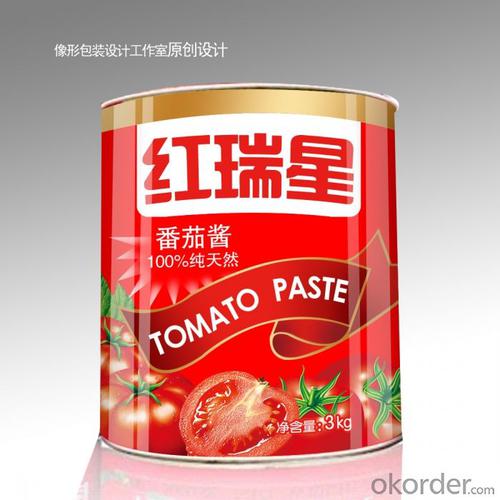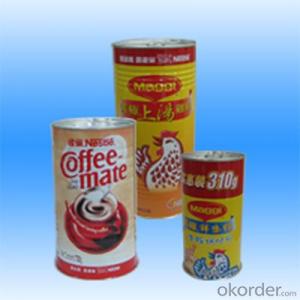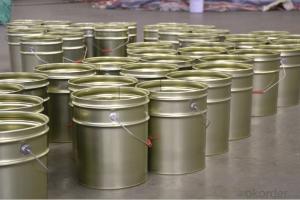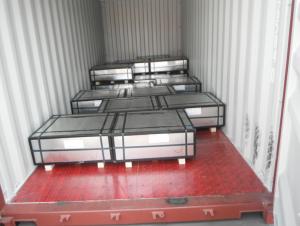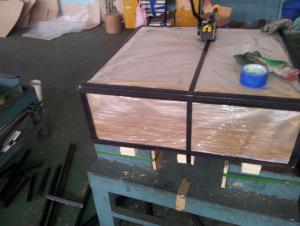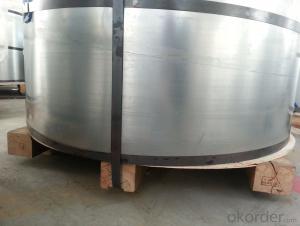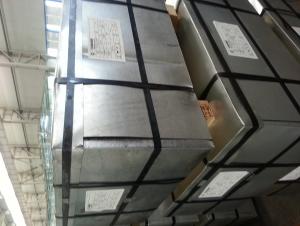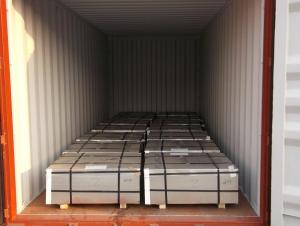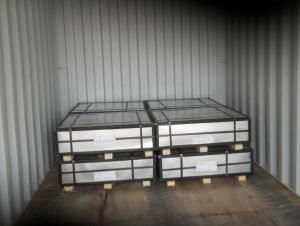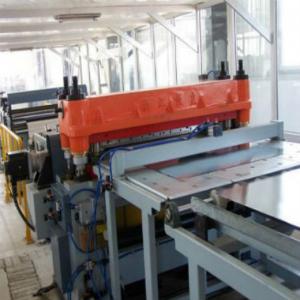Tinplate Coil, Tomato Paste Usage, JIS G 3303 For Paint Cans
- Loading Port:
- Tianjin
- Payment Terms:
- TT OR LC
- Min Order Qty:
- 25 m.t.
- Supply Capability:
- 30000 m.t./month
OKorder Service Pledge
OKorder Financial Service
You Might Also Like
1.Usage
Tinplate is widely used for making all types of containers, containing industrial usage such as paint can, oil can, aerosol cans etc., and food cans like milk powder cans, tomato paste can, dry food cans etc.
2. Quality
As a state owned company and a large tinplate supplier in China, our tinplate quality ranks 1st level in China, similar to Bao Steel, Posco etc.
3. Specification
standard: GB/T2520, JIS G3303, DIN EN10202
Material: MR /SPCC
Thickness available: 0.16-0.50MM
Width available: 600~1050MM
Temper grade: T1 – DR8
Tin coating: ordinary 2.8g/2.8g, 5.6g/5.6g and others
Package: sea worthy export package.
Applications: Tin can for chemicals & paint cans, industrial cans, food cans
4. Our factory photo & equipments

5. Our Markets:
now our tinplate has been sold to more than 50 countries, including Europe country, Gulf Area, South American, South Afric etc.
6. Our Overseas Wareouses:
Furthermore, in the year 2014, we have more than 10 overseas warehouses all over the word, located in KSA, UAE, Oman, Russia, Kuwait, Qatar, Oman, Chile, Brazil etc.
7. FAQ
a. what's the annual output?
about 500,000 tons per year.
b. where's the raw matrial from?
our hot rolled coil is purchased from Capital Steel and other state owned mill, with quite good quality.
c. how long is the delivery time?
normally for SPCC about 45~55 days, while 65~75 days for MR material
d. how to control the quality during production process?
inside our workshop, we have MES syestem. It realizes the optimization of the production procedure in the workshop. It could record each step of the whole production procedures, and if some problem appears, factory could easily found and take action, it’s quite helpful to monitor and control the quality.
- Q: What are the main challenges in tinplate coating?
- One of the main challenges in tinplate coating is achieving consistent and uniform coverage on the surface of the tinplate. This requires specialized equipment and precise control of the coating process parameters, such as temperature, speed, and viscosity of the coating material. Additionally, maintaining adhesion between the tinplate and the coating is another challenge, as any defects or inconsistencies in the adhesion can lead to corrosion or peeling of the coating. Lastly, ensuring that the coating is resistant to external factors such as moisture, chemicals, and abrasion is crucial for the long-term durability and performance of tinplate products.
- Q: What are the environmental benefits of using tinplate?
- There are several environmental benefits of using tinplate. Firstly, tinplate is highly recyclable, meaning it can be reused multiple times without losing its properties. This helps reduce the demand for new raw materials and decreases the amount of waste sent to landfills. Additionally, tinplate is resistant to corrosion, which means it has a longer lifespan compared to other packaging materials. This reduces the need for frequent replacements, thereby conserving resources and reducing overall environmental impact. Lastly, tinplate has excellent barrier properties, which protect the contents of the packaging from external factors such as moisture, light, and oxygen. This helps preserve the quality and freshness of the products, reducing food waste and promoting sustainability.
- Q: Can tinplate be used for medical or pharmaceutical packaging?
- Yes, tinplate can be used for medical or pharmaceutical packaging. Tinplate is a durable and corrosion-resistant material that provides an excellent barrier against moisture, light, and oxygen, which is crucial for preserving the quality and integrity of medical or pharmaceutical products. Additionally, tinplate's ability to be sterilized makes it suitable for packaging items that require a high level of hygiene.
- Q: What is the cost of tinplate?
- The cost of tinplate varies depending on factors such as the market demand, quantity purchased, and quality specifications. It is best to check with suppliers or market sources for the current pricing.
- Q: Are there any limitations to using tinplate packaging?
- Yes, there are several limitations to using tinplate packaging. Firstly, tinplate packaging is relatively expensive compared to other packaging materials such as plastic or cardboard. Additionally, tinplate packaging is heavier and bulkier, which can increase transportation costs. Tinplate is also more susceptible to corrosion, especially in high humidity or acidic environments. Lastly, tinplate is not as flexible as other materials, making it less suitable for certain packaging designs or shapes.
- Q: Is tinplate affected by moisture or humidity?
- Yes, tinplate is affected by moisture and humidity. Moisture and high humidity levels can cause tinplate to corrode and rust over time. It is important to store and handle tinplate in dry conditions to prevent any potential damage.
- Q: How does tinplate perform in terms of temperature resistance?
- Tinplate has good temperature resistance, as it can withstand both high and low temperatures without significant deformation or degradation.
- Q: How does tinplate compare to plastic in terms of sustainability?
- Tinplate generally has a higher sustainability profile compared to plastic due to several reasons. Firstly, tinplate is a highly recyclable material, with a recycling rate of around 90%, while plastic recycling rates vary and are generally lower. This means that tinplate is more likely to be reused and diverted from landfills, reducing its environmental impact. Additionally, tinplate production requires significantly less energy and emits fewer greenhouse gases compared to plastic manufacturing. Moreover, tinplate is more durable and has a longer lifespan, making it suitable for multiple uses, whereas plastic is often single-use and contributes to the growing waste problem. Overall, tinplate offers better sustainability prospects in terms of recycling, energy consumption, and durability compared to plastic.
- Q: Can tinplate be embossed or engraved?
- Yes, tinplate can be embossed or engraved.
- Q: Can tinplate be used for automotive applications?
- Yes, tinplate can be used for automotive applications. Tinplate is a type of steel coated with a thin layer of tin, which provides it with excellent corrosion resistance. This makes it suitable for various automotive components, such as fuel tanks, panels, and trim. Additionally, tinplate is easily formable, weldable, and has good strength, making it a favorable material for automobile manufacturing.
Send your message to us
Tinplate Coil, Tomato Paste Usage, JIS G 3303 For Paint Cans
- Loading Port:
- Tianjin
- Payment Terms:
- TT OR LC
- Min Order Qty:
- 25 m.t.
- Supply Capability:
- 30000 m.t./month
OKorder Service Pledge
OKorder Financial Service
Similar products
Hot products
Hot Searches
Related keywords



